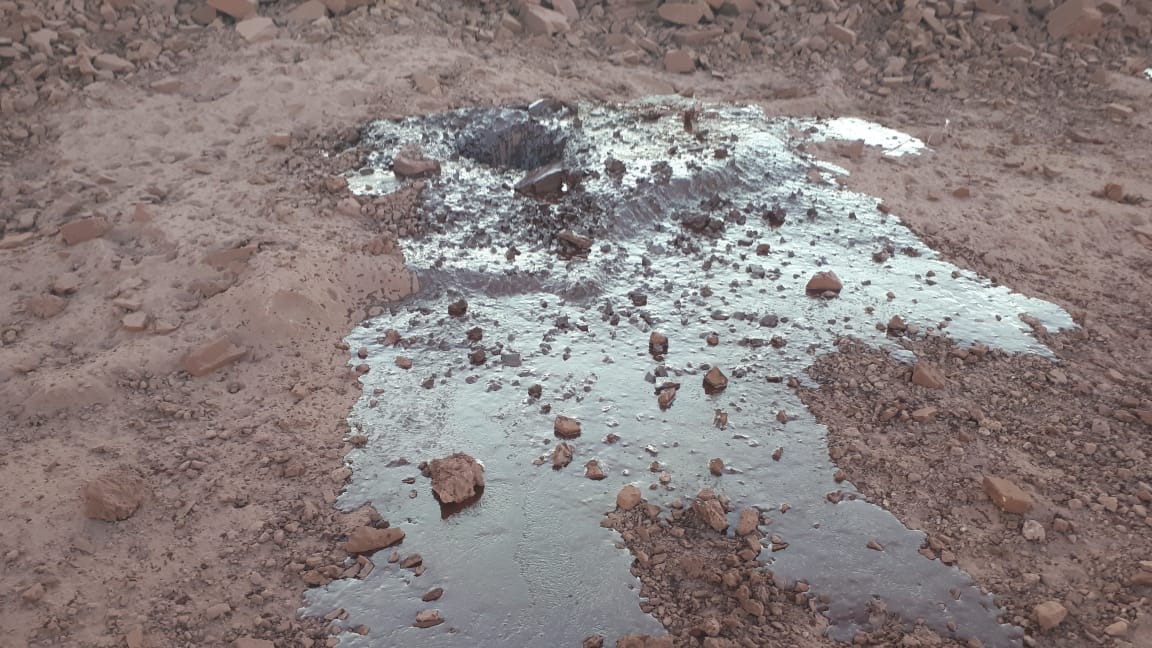A decline in blast performance at an iron ore mine in South Africa has led Omnia company BME to investigate a new mechanism for bulk emulsion breakdown, and to find innovative solutions for the customer.
In a recent article in the International Society for Explosives Engineers’ Journal of Explosives Engineering, experts from BME reveal a fascinating encounter with potential acidic sulphate soil (PASS) – sharing valuable insights for the mining sector globally.
The article’s authors – BME global manager Blasting Science D Scott Scovira, BME general manager Production & Logistics Dirk Voogt and BME senior chemist Quentin Steyl – note that iron ore mines are not normally associated with reactive or acidic ground. Indeed, they conducted ground sample reactivity testing which confirmed that neither reactive ground nor acidic water was to blame.
The question which then needed to be answered was what caused the emulsion to break down; the same emulsion continued to be used by other customers around the country to normal effect. They conducted many tests, including the testing of a mixture of the straight gassed bulk emulsion plus mine blast hole water and blast cuttings – representing the total hold loading condition at the mine. These tests showed that this mixture created an environment in the blast hole leading to autocatalytic acid generation, with subsequent over-gassing and breaking down of the emulsion.
“A deeper investigation into the ground mineralisation revealed the presence of PASS, which is a new mechanism for bulk emulsion breakdown,” they say. The condition was remarkably uncommon and was the first occasion that it had been observed in over 50 years of emulsion usage. Despite an extensive search of publicly available knowledge in this field, no-one had described PASS in the context of bulk emulsions. Research did reveal, however, that PASS can become an acid sulphate soil in the presence of a strong oxidiser.
“This conversion reaction results from the presence of reduced inorganic sulphur (RIS) in the soil,” they continue. “Actual acid sulphate soils (AASS) – soil materials that contain RIS – have undergone oxidation to produce acid; any pH drop indicates the soil’s potential to form sulphuric acid when it is disturbed and exposed to oxygen.”
In the absence of water, soil samples from the mine showed no reactivity with the straight gassed bulk emulsion. Some samples showed the potential to become reactive, and to start breaking up when a strong oxidiser was present. When a sodium nitrite-based gassing solution was used to sensitise the emulsion in contact with soil, a reaction began that impacted negatively on the emulsion matrix.
“To manage this challenge, we therefore investigated the difference between the effect of standard sodium nitrite and water solution, and an emulsified gassing agent (EGA),” they explain. “EGA is an emulsion which is incorporated more readily into the base emulsion – thus preventing contact between the gassing agent (a strong oxidiser) and the PASS.”
It was this homogenising of EGA into straight bulk emulsion which significantly inhibited PASS ground reactions with the emulsion – creating a product of very high viscosity which held its form. The resulting emulsion was found to reduce contact between the gassing agent and the PASS.
“These modifications to the bulk explosives system have provided a window of protection for the straight bulk emulsion against these site ground conditions,” they say. “They have also enhanced resistance to product degradation by the action of dynamic water present at the mine site.”
Important performance improvements were achieved, with the increased dispersion of the gassing agent in the emulsion – as well as reduced bubble size in the gassing agent. Field measurements demonstrated that detonation velocity was increased – when compared to non-homogenised gassed bulk emulsion.
“As PASS has been only recently discovered as an emulsion decomposition mechanism, we expect there will be considerable learnings achieved in the future,” they conclude. “The focus will be on continuously improving the inhibition process against sulphate ground types – through chemical formulation and mechanical manipulation. We trust that our investigation and solutions will add valuable insights to blasting professionals and the global explosives engineering community.”






